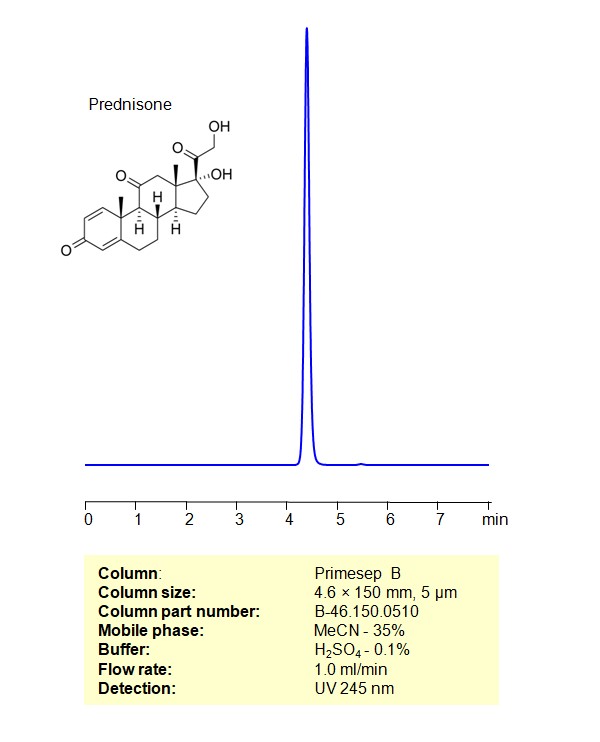HPLC Method for Analysis of Prednisone on Primesep B by SIELC Technologies

High Performance Liquid Chromatography (HPLC) Method for Analysis of Prednisone
Prednisone is a synthetic corticosteroid drug that belongs to the class of glucocorticoids. It is a prodrug, meaning that it is biologically inactive until it undergoes metabolic activation in the liver, where it is converted into its active form, prednisolone. Both prednisone and prednisolone have anti-inflammatory and immunosuppressant properties and are used for various medical conditions.
- Anti-inflammatory: Prednisone is used to reduce inflammation in various conditions such as arthritis, allergic reactions, and inflammatory bowel diseases.
- Immunosuppression: It is employed to suppress the immune system in conditions like organ transplantation and certain autoimmune diseases.
- Respiratory Conditions: Prednisone is often prescribed for respiratory conditions like asthma and chronic obstructive pulmonary disease (COPD).
Prednisone can be retained, and analyzed using a Primesep B mixed-mode stationary phase column. The analysis utilizes an isocratic method with a simple mobile phase consisting of water, acetonitrile (MeCN), and sulfuric acid as a buffer. Detection is achieved using UV 245 nm
| Column | Primesep B, 4.6 x 150 mm, 5 µm, 100 A, dual ended |
| Mobile Phase | MeCN/H2O – 35% |
| Buffer | H2SO4 – 0.1% |
| Flow Rate | 1.0 ml/min |
| Detection | UV 245 nm |
| Class of Compounds | Corticosteroids |
| Analyzing Compounds | Prednisone |
Application Column
Primesep B
Column Diameter: 4.6 mm
Column Length: 150 mm
Particle Size: 5 µm
Pore Size: 100 A
Column options: dual ended





